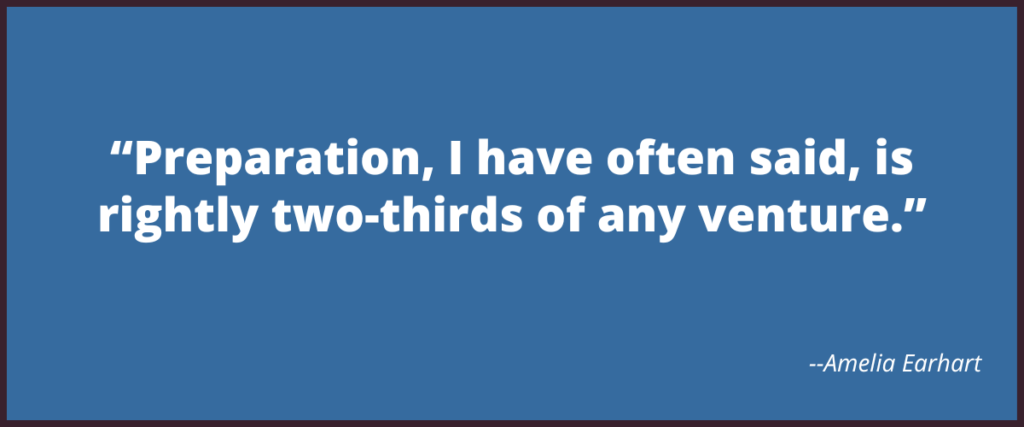June 10th, 2024

The secret to a successful survey lies in the preparation. Amelia Earhart’s words resonate deeply when it comes to survey ventures. To conduct a survey that ensures high-quality data collection to inform decision-making, you need to create a survey administration guide.
This guide is the cornerstone of any survey project. It paves the way for effective and efficient data collection. If multiple personnel are administering the survey, it’s crucial to synchronize all essential tasks through group training and written procedures.
Key elements of a survey administration guide include:
Timeline. Define the timeframe for survey administration as well as essential pre- and post-survey activities. An example of tasks to include in the timeline for an online survey is as follows:
Communications Plan. It’s important to communicate before, during, and after the survey administration. Here’s an example of messaging to send to your survey participants:
Before Administration. We are dedicated to understanding what is going well and where improvements may be needed for our program. To do this, we need your feedback. Please look for the survey link (date) and complete it by (date). Your feedback matters so we can ensure we are providing the highest quality services. Thank you!
Beginning the Survey. We are looking forward to your feedback about our program. Please go here (insert link) to complete a survey. Your feedback will help us with program planning as well as to understand program impact. Please submit your responses by (date). We will share a summary of the survey results in (month). Thank you!
After Administration. Thank you for participating in our survey! We received a total of (number of surveys). We truly appreciate your time and insights. We are in the process of analyzing the data and anticipate sharing results by (month). Thank you!
Survey Materials. If administering a paper survey, include a materials checklist.
Script. If administering a paper survey, develop a script that all survey administrators will use. Below is a sample script:
Our program offers services to support you. We would like your feedback to help us understand how we’re doing. Please fill out the survey as honestly as possible. There are no right or wrong answers, we only want to know what you think about our services. We will not ask you to put your name on the survey, so no one will know your answers. If you do not understand a question or need some other kind of help, just ask me. When you are finished, please put your completed survey in this box. Thank you!
Let’s look at an example. The Northwest Housing Alternatives (NHA) Resident Survey was administered in person by the six Resident Service Coordinators (RSC) at 31 properties. How did we make sure the survey was administered consistently across all properties?
A group training with written instructions on how to administer surveys made sure all staff collected surveys consistently and successfully. We agreed on a two-week timeframe in which all RSCs administered the surveys in person at each location. The written instructions included the same script each RSC would use, whether they were administering it in a group setting, such as a pizza party, or going door to door to administer the survey individually. This process ensured that all residents received the same instructions.
Creating a survey administration guide is not a difficult or time-consuming task, but it requires careful planning and attention to detail. You can use existing templates or examples from similar surveys as a starting point, but you should always customize your guidelines to fit your specific survey context and audience. By creating survey administration guidelines before doing the survey, you can ensure that your survey is well executed and well received.
Want more? An entire chapter in my book, Nonprofit Program Evaluation Made Simple, is dedicated to survey design. Get your copy today.
Chari accurately captured the fundamental goals and mission of our organization and transformed our input into a clear evaluation process that helps us assess the impact of our programs on the lives of the families that we serve. Now we have an amazing way to measure the physical, emotional, and mental effects of our programs and to guide change, ensuring that we are delivering services in the most effective way possible.
Brandi Tuck, Executive Director, Portland Homeless Family Solutions
Get periodic emails with useful evaluation resources and industry updates.
We promise not to spam you!